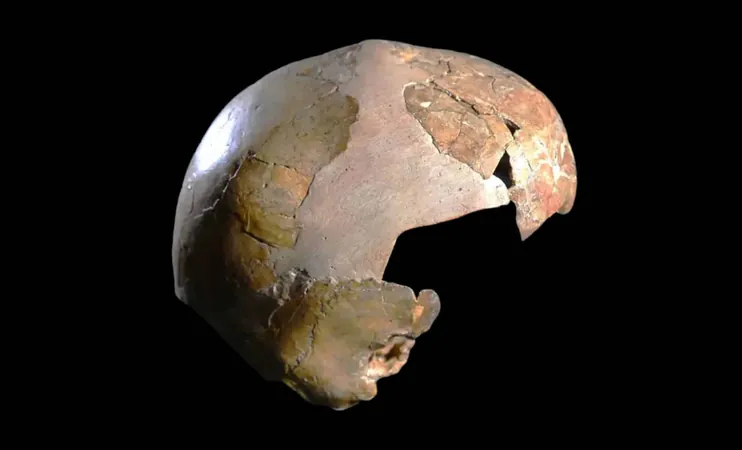
The Secret Behind Baseball's "Magical" Mud Unveiled
2024-11-05
Author: Jia
If you paid close attention to the baseballs used during the World Series last month, you might have noticed something peculiar: a mysterious brown substance coating them. Fear not—this isn’t a result of any foul play, but rather the result of a special mud that plays a crucial role in the game of baseball.
For many decades, Major League Baseball has utilized a unique mud, sourced from a clandestine location along a tributary of the Delaware River in New Jersey. Only a select few were privy to the precise location, and even fewer knew the mud's exact properties until now. Recent research has shed light on this intriguing substance, revealing remarkable mechanical characteristics that may go far beyond America's favorite pastime.
Douglas Jerolmack, a professor of earth and environmental science at the University of Pennsylvania and co-author of a significant study published in The Proceedings of the National Academy of Sciences, explains, "This is the magical thing: It spreads like face cream and grips like sandpaper." This dual functionality makes baseball mud not only interesting but potentially beneficial in various applications beyond the diamond.
The researchers believe that the principles discovered in baseball mud could inform the development of sustainable materials for construction, agriculture, and other fields. "This study assists in the quest for natural materials that can supplant hydrocarbon-based substances we currently utilize," stated Shravan Pradeep, a postdoctoral researcher involved in the study.
The application of this baseball mud is steeped in tradition. Since the 1950s, clubhouse attendants have carefully applied the mud to fresh baseballs by hand, creating a thin yet vital layer that enhances the player’s grip and control. While the precise source of the mud remains closely guarded, it isn't challenging to acquire. The authors of the study purchased a jar of Lena Blackburne Baseball Rubbing Mud online for under $30.
Through various analyses, including measurements of viscosity, friction, and adhesion, the researchers determined that this mud is composed of clay, quartz particles, a smattering of sand, and trace elements from plants—amounting to around 43% water by weight. What sets this mud apart isn't just its basic components but the specific ratios of these elements, giving it unique properties.
According to the study, once applied, the mud provides a smooth spread but dries to reveal a slightly tacky texture. The angular sand particles play a pivotal role, effectively forming what Dr. Jerolmack describes as "a uniform layer with sand particles that are like barnacles studding the surface.” This unique balance of properties allows the mud to function effectively as both a lubricant and a friction component, giving baseballs a uniformly finished surface that enhances the connection between the ball and a pitcher’s hand.
"Those who work with it truly understand its optimization," noted Dr. Jerolmack. While Major League Baseball has experimented with synthetic options in recent years, the research team argues that natural mud remains an effective and sustainable choice. Paulo Arratia, a mechanical engineering professor, stated, "There is no need to turn to synthetic alternatives for this."
As fascinating as the study’s findings are for environmental and construction applications, there’s also a nostalgic joy in relating this work to the world of baseball. "It’s baseball-related, so it’s fun," Dr. Pradeep concludes, adding a lighthearted twist to the serious implications of their research. The next time you see a ball covered in mud, remember that its "magical" qualities are backed by science—and a rich baseball tradition that spans generations.


 Brasil (PT)
Brasil (PT)
 Canada (EN)
Canada (EN)
 Chile (ES)
Chile (ES)
 Česko (CS)
Česko (CS)
 대한민국 (KO)
대한민국 (KO)
 España (ES)
España (ES)
 France (FR)
France (FR)
 Hong Kong (EN)
Hong Kong (EN)
 Italia (IT)
Italia (IT)
 日本 (JA)
日本 (JA)
 Magyarország (HU)
Magyarország (HU)
 Norge (NO)
Norge (NO)
 Polska (PL)
Polska (PL)
 Schweiz (DE)
Schweiz (DE)
 Singapore (EN)
Singapore (EN)
 Sverige (SV)
Sverige (SV)
 Suomi (FI)
Suomi (FI)
 Türkiye (TR)
Türkiye (TR)
 الإمارات العربية المتحدة (AR)
الإمارات العربية المتحدة (AR)